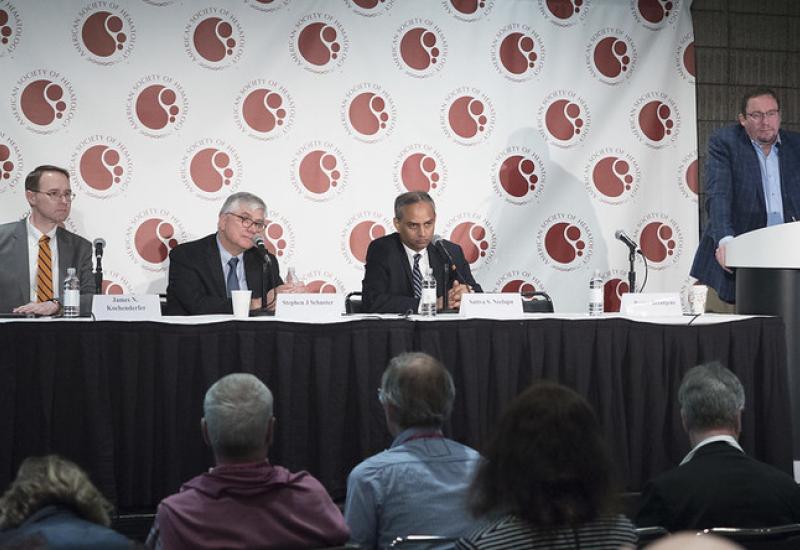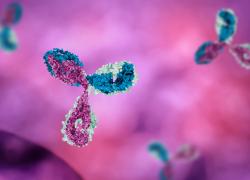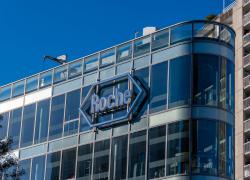
ASCO 2025 preview – Itovebi strengthens its first-line claim
Roche’s PI3Kα inhibitor continues to pull away from Novartis’s Piqray.
Roche’s PI3Kα inhibitor continues to pull away from Novartis’s Piqray.

Roche’s Itovebi got one up on Novartis’s similarly acting Piqray last year with a first-line breast cancer label, and now Roche can also boast of having the first PI3K-targeting drug to show an overall survival benefit. Data from the Inavo-120 trial, revealed in an ASCO abstract on Thursday, show that a combination of Itovebi plus Ibrance and Faslodex reduced risk of death by 33% versus Ibrance plus Faslodex alone.
The setting was first-line PIK3CA-mutated, ER-postitive HER2-negative patients who had progressed on adjuvant endocrine therapy. The result won’t change Itovebi’s label, as the drug was already approved in this setting based on progression-free survival data from the same study. But it does support Roche’s claims of differentiation versus Piqray.
Less toxic?
Presenting the data at a pre-ASCO press briefing, Dr Nicholas Turner of the Royal Marsden Hospital in London noted that it hadn’t previously been possible to combine PI3K inhibitors with CDK4/6 inhibitors like Ibrance because of side effects.
Indeed, Piqray is only approved for second-line PIK3CA-mutated breast cancer, in combination with Faslodex – and its also contains a more onerous warning section than Itovebi’s. Piqray isn't being studied in the front line.
Itovebi & Piqray’s approved uses
Inavo-120 | Solar-1 | |||
|---|---|---|---|---|
| Setting | 1st-line (post-adjuvant endocrine therapy) | 2nd-line | ||
| Regimen | Itovebi + Ibrance + Faslodex | Ibrance + Faslodex | Piqray + Faslodex | Faslodex |
| ORR | 58% | 25% | 36% | 16% |
| mPFS | 17.2 months* | 7.3 months | 11.0 months | 5.7 months |
| mOS | 34.0 months | 27.0 months | N/A | N/A |
| Warnings | Hyperglycaemia, stomatitis, diarrhoea, embryo-fetal toxicity | Severe hypersensitivity, severe cutaneous adverse reactions, hyperglycaemia, pneumonitis, diarrhoea/colitis, embryo-fetal toxicity | ||
Note: *recalculated from 15.0 months. Source: product labels & ASCO 2025.
Both drugs hit the wild-type and mutant forms, though Itovebi has also been claimed to degrade mutant PI3Kα. Still, more selective PI3Kα inhibitors, designed to be less toxic still, are coming. Wild-type sparing and mutation-specific candidates are in development, including Relay’s RLY-2608, which will soon go into phase 3 in second-line disease.
Inavo-120
For now, though, Roche can make the most of its niche. In Inavo-120 median OS with the Itovebi-containing triplet was 34 months, versus 27 months for control – a statistically significant result with a p value of 0.019.
PFS was also recalculated, from 15 months previously with the triplet, to 17 months now. ASCO’s chief medical officer, Dr Julie Gralow, noted a delay in subsequent chemo of around two years as particularly impressive.
Itovebi was still linked with toxicity though, with a 27% rate of serious adverse events, versus 14% with control. Hyperglycemia was particularly problematic, seen at any grade in 63% of Itovebi-treated patients. However, Turner flagged what he deemed a relatively low discontinuation rate with the triplet, 7%, and said side effects were generally manageable.
Several other phase 3s of Itovebi are ongoing: Inavo-121 in the second line (this pits Itovebi against Piqray); Inavo-122 in the maintenance setting; and Inavo-123 in endocrine-sensitive patients. Roche reckons Itovebi will bring in sales of $2-3bn at peak, but a lot could depend on the entrance of more selective PI3Kα blockers.
ASCO takes place in Chicago on 30 May to 4 June.
1748













